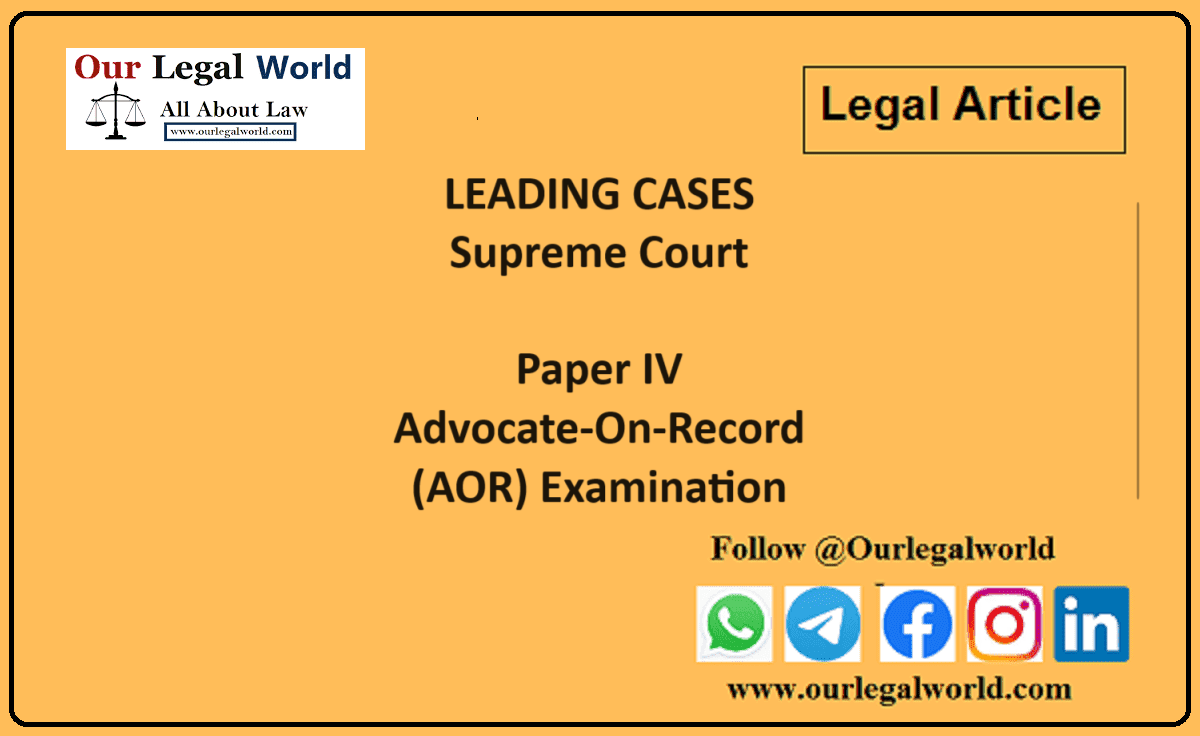Difference between Common object and Common intention IPC
Introduction
According to Section 34, when a criminal act is done by several persons in furtherance of common intention of all, each of such persons is liable for that act in the same manner as if it were done by him alone. Section 34 lays down only a rule of evidence and does not create a substantive offence. This section is intended to meet cases in which it may be difficult to distinguish between the acts of the individual members of a party or to prove exactly what part was taken by each of them in furtherance of the common intention of all. This section really means that if two or more persons intentionally do a thing jointly, it is just the same as if each of them has done it individually. The reason why all are deemed guilty in such cases is that the presence of accomplices gives encouragement, support and protection to the person actually committing an act.
Elements Of Section 34:
To attract the application of Section 34, the following conditions must be satisfied:-
1. Some Criminal Act: – ‘Criminal act’ used in section 34 does not refer to individual acts where a crime is committed by a group of persons. Where a crime is committed by several persons in furtherance of common intention of all of them, each of them doing some act, similar or diverse, big or small shall be liable for that act. ‘That act’ refers to the ‘criminal act’ used in section 34 which means the unity of criminal behaviour which results in something for which an individual would be punishable if it were all done by himself alone in an offence.
2. Criminal Act Done By Several Persons: – The criminal act in question must have been done by several persons i.e. by more than one person. The number of wrong doers should be at least two. Most importantly, if the criminal act was fresh and independent act springing wholly from the mind of the doer, the others are not liable merely because when it was done they were intending to be partakers with the doer in a different criminal act.
3. Common Intention:- The words “in furtherance of the common intention of all” were added to section 34 after words ‘persons’ in 1870 the idea for which, possibly, was derived from the following passage of the Privy Council’s judgment:
“Where parties go with a common purpose to execute a common intention, each and everyone becomes responsible for the acts of each and every other in execution and furtherance of their common purpose, as the purpose is common so must be the responsibility.”
The expression ‘common intention’ means unity of purpose or a pre-arranged plan; it has been given various meanings which are as follows-
Common intention implies a pre-arranged plan, prior meeting of minds, prior consultation in between all the persons constituting the group [Mahboob Shah v. Emperor, AIR 1945 PC 118].
– Common intention implies a pre-arranged plan. Pre-arranged plan means prior concert or prior meeting of minds. Criminal act must be done in concert pursuant to the pre-arranged plan. Common intention comes into being prior to the commission of the act in point of time.
– Where there is no indication of premeditation or of a pre-arranged plan, the mere fact that the two accused were seen at the spot or that the two accused fired as a result of which one person died and two others received simple injuries could not be held sufficient to infer common intention [Ref. Ramachander v. State of Rajasthan, 1970 Cr.L.J. 653].
However, common intention may develop on the spot as between a number of persons and this has to be inferred from the act and conduct of the accused, and facts and circumstances of the case [Kripal Singh v. State of U.P., AIR 1954 SC 706].
4. Participation In The Criminal Act:- The participation in a criminal act of a group is a condition precedent in order to fix joint liability and there must be some overt act indicative of a common intention to commit an offence. The law requires that the accused must be present on the spot during the occurrence of the crime and take part in its commission; it is enough if he is present somewhere nearby.
The Supreme Court has held that it is the essence of the section that the person must be physically present at the actual commission of the crime. He need not be present in the actual room; he can for instance, stand guard by a gate outside ready to warn his companions about any approach of danger or wait in a car on a nearby road ready to facilitate their escape, but he must be physically present at the scene of the occurrence and must actually participate in the commission of the offence some way or other at the time crime is actually being committed.
The first leading case on the point is Barendra Kumar Ghosh v. King Emperor, AIR 1925 PC 1 (also known as Shankari Tola Post Office Murder Case). In this case several persons appeared before the sub-post master who was counting the money on the table and demanded the money. In the mean time they opened fire killed the sub-post master and ran away without taking any money. Barendra Kumar was, however, caught with a pistol in his hand and was handed over to the police.
The accused was tried under sections 302/34 as according to the prosecution he was one of the three men who fired at the sub-post master. The accused denied his charge on the ground that he was simply standing outside and had not fired at the deceased. The trial court, on being satisfied that the sub-post master was killed in furtherance of the common intention of all, convicted the accused even if he had not fired the fatal shot.
The High Court of Calcutta and the Privy Council both agreed with the findings of the trial court and held the accused guilty of murder. Giving his judgment LORD SUMNER quoting a line from Milton’s famous poem, “ON HIS BLINDNESS” said. “even if the appellant did nothing as he stood outside the door, it is to be remembered that in crimes as in other things they also serve who only stand and wait….. Section 34 deals with doing of separate act, similar or diverse by several persons; if all are done in furtherance of a common intention, each person is liable for the result of them all as if he had done them himself”.
Common Object:- Section 149, like Section 34, is the other instance of constructive joint liability. Section 149 creates a specific offence. It runs as under:
“If an offence is committed by any member of an unlawful assembly in prosecution of the common object of that assembly, or such as the members of that assembly knew to be likely to be committed in prosecution of that object, every person who, at the time of the committing of that offence, is a member of the assembly, is guilty of that offence.”
“If an offence is committed by any member of an unlawful assembly in prosecution of the common object of that assembly, or such as the members of that assembly knew to be likely to be committed in prosecution of that object, every person who, at the time of the committing of that offence, is a member of the assembly, is guilty of that offence.”
Elements Of Section 149:-
The essence of offence under Section 149 is assembly of several (five or more) persons having one or more of the common objects mentioned in Section 141 and it could be gathered from the nature of the assembly, arms used by them and the behaviour of the assembly at or before scene of occurrence. Section 149 creates joint liability of all members of an unlawful assembly for criminal act done by any member in prosecution of the common object of the said assembly. So the essential ingredients of Section 149 are:
1. There must be an unlawful assembly, as defined in Section 141;
2. Criminal act must be done by any member of such assembly;
3. Act done is for prosecution of the common object of the assembly or such which was likely to be committed in prosecution of the common object;
4. Members have voluntarily joined the unlawful assembly and knew the common object of the assembly.
5. Mere presence and sharing of common object of the assembly makes a person liable for the offence committed even if he had no intention to commit that offence.
The Section is divided into two parts-
1.In Prosecution Of The Common Object:- The words “in prosecution of the common object” show that the offence committed was immediately connected with the common object of the unlawful assembly of which accused were members. The act must have been done with a view to accomplish the common object of the unlawful assembly.
2. Members Knew To Be Likely:- The second part relates to a situation where the members of the assembly knew that the offence is likely to be committed in prosecution of the common object. A thing is likely to happen only when the situation is like “it will probably happen” or “may very well happen”. The word ‘knew’ indicates a state of mind at the time of commission of an offence, knowledge in this regard must be proved. The word ‘likely’ means some clear evidence that the unlawful assembly had such a knowledge.
Difference Between Common Intention And Common Object:- The difference between common intention and common object may be stated as under:
1. Under Section 34 number of persons must be more than one. Under Section 149 number of persons must be five or more.
2. Section 34 does not create any specific offence but only states a rule of evidence. Section 149 creates a specific offence.
3. Common intention required under Section 34 may be of any type. Common object under Section 149 must be one of the objects mentioned in Section 141.
4. Common intention under Section 34 requires prior meeting of minds or pre-arranged plan, i.e. all the accused persons must meet together before the actual attack participated by all takes place. Under Section 149, prior meeting of minds is not necessary. Mere membership of an unlawful assembly at the time of commission of the offence is sufficient.
5. Under Section 34 some active participation is necessary, especially in a crime involving physical violence. Section 149 does not require active participation and the liability arises by reason of mere membership of the unlawful assembly with a common object.
Common Intention May Also Develop On The Spot: Exception To The General Rule- Generally, it is said that, “a common object may develop on the spot but a common intention cannot”. But, in certain circumstances common intention also may develop suddenly on the spot and such common intention may be inferred from the facts and circumstances of the case and conduct of the accused persons. Following cases are illustrative on this point-
In Kripal Singh v. State of U.P., AIR 1954 SC 706; the Supreme Court held that a common intention may develop on the spot after the offenders have gathered there. A previous plan is not necessary. Common intention may be inferred from the conduct of the accused and the circumstances of the case.
Reference







![Tax Law Internship at Legum Attorney [Chamber of Ashish Panday], Delhi : Apply by 15th May 2025](https://www.ourlegalworld.com/wp-content/uploads/2025/05/IMG_0113-min.png)

